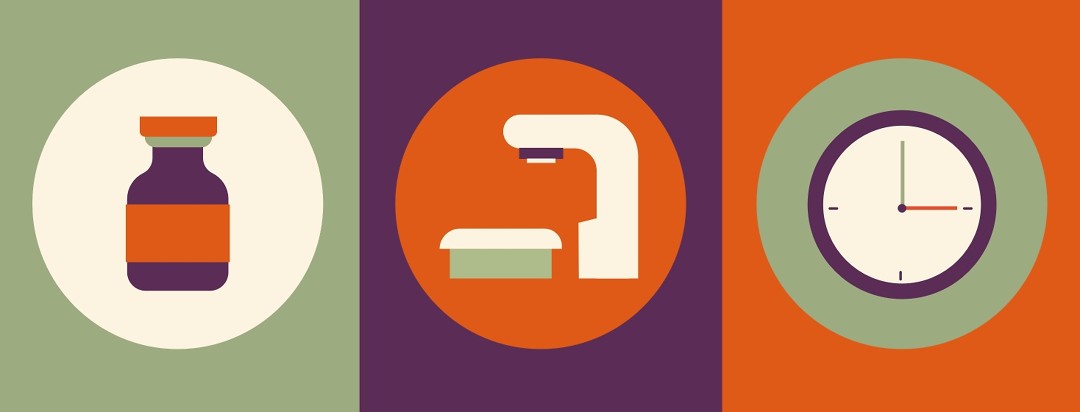Exploring Blood Cancer Treatment Options
In September 2019, Health Union (the parent company of Blood-Cancer.com) conducted a survey to learn more about how blood cancer affects members of our community. More than 1,900 people living with blood cancer completed the survey. This included people with:
- Multiple myeloma
- Lymphoma
- Leukemia
- Myeloproliferative neoplasms (MPN)
- Myelodysplastic syndromes (MDS) and other
The results from our 3rd Annual Blood Cancer In America survey show that people who participated are using a variety of treatment options to treat their blood cancer. Below are some insights from our community.
What treatments do people with blood cancer initially choose?
Treatment depends on a variety of factors, including the type of blood cancer you have, the spread of disease, and overall health. Sometimes more than one treatment is necessary.
Nearly 50 percent of respondents shared that after discussing treatment options with their care provider, they choose chemotherapy. This includes chemotherapies like ABVD, R-CHOP, and Cytarabine. Other first treatments reported include:
- 25 percent used targeted therapy like Rituxan™ or Gleevec™
- 20 percent used watchful waiting
- 15 percent used steroid therapy/corticosteroids
- 9 percent used transfusion therapy like blood transfusion
- 7 percent used radiation therapy
- 6 percent used bone marrow transplant/stem cell transplant
- 3 percent used antibiotic therapy
- 3 percent used a surgical procedure like splenectomy (spleen removal)
- 1 percent used immunotherapy
- 1 percent biologic therapy
Less than 1 percent of respondents used CAR T-cell therapy or phototherapy (photopheresis) as a first treatment. About 9 percent of others shared that they started with “other treatment or therapy.”
Is immediate treatment necessary for everyone?
When to start treatment depends on the type of blood cancer, how aggressive it is, and the extent of spread.
The majority of those surveyed chose to begin treatment or undergo surgery shortly after receiving their blood cancer diagnosis. About 64 percent of respondents began treatment and/or had surgery within 1 month of their diagnosis. Another 18 percent reported that they started treatment and/or had surgery within 1 to 3 months of their diagnosis.
More than half of survey respondents shared that they did not use watchful waiting before starting treatment or having surgery. During this approach, healthcare providers closely watch a patient’s condition but do not give treatment unless symptoms appear or change. About 10 percent of respondents reported they did watchful waiting for less than 6 months. Another 8 percent used watchful waiting for 6 months to 1 year.
What are common ongoing types of treatments for blood cancer?
At the time of the survey, 29 percent of survey respondents were currently using chemotherapy to help treat or manage their blood cancer. Another 13 percent were receiving steroid therapy or corticosteroids.
Other respondents shared that they were currently using the following treatments:
- Antibiotic therapy (6 percent)
- Transfusion therapy (4 percent)
- Biologic therapy (3 percent)
- Radiation therapy (1 percent)
- CAR T-cell therapy (1 percent)
- Phototherapy (.04 percent)
Survey respondents also reported previous therapies they had used but are no longer receiving, including:
- Chemotherapy (45 percent)
- Steroid therapy or corticosteroids (30 percent)
- Antibiotic therapy (16 percent)
- Transfusion therapy (28 percent)
- Biologic therapy (5 percent)
- Radiation therapy (16 percent)
- CAR T-cell therapy (3 percent)
- Phototherapy (1 percent)
How do people living with blood cancer feel about the way their treatment is working?
The majority of survey respondents shared that they felt their current treatment plan was keeping their blood cancer symptoms and/or progression under control. Treatments included both prescription and over-the-counter drugs, as well as other therapies for their specific blood cancer type.
Survey respondents used a scale to share how well their blood cancer is under control on their current treatment plan. On the scale, 1 meant “not at all controlled” and 7 meant “extremely controlled.” Respondents shared the following:
- 4 percent answered 1, or “not at all controlled”
- 2 percent answered 2
- 4 percent answered 3
- 14 percent answered 4
- 18 percent answered 5
- 24 percent answered 6
- 34 percent answered 7, or “extremely controlled”
If you are receiving treatment for your blood cancer and have concerns about how it is working, talk with your doctor about it. Let them know what your concerns are and start the discussion. If something is not working for you, let them know and see if you can work together to find something that fits your needs in a better way.
The Blood Cancer In America survey took place online from September 2019 through February 2020. The 1,919 respondents were recruited from Health Union’s Community channels.

Join the conversation